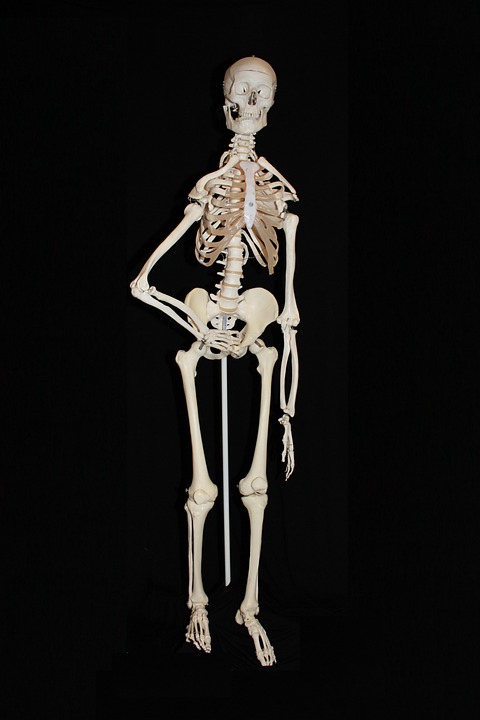Catabolism Uncovered: A Deep Dive into the Body’s Energy-Deriving Mechanisms
Introduction
Catabolism is a fundamental biological process encompassing the breakdown of complex molecules into simpler ones, ultimately releasing energy that the body requires for various functions. This crucial aspect of metabolism is often overshadowed by its counterpart, anabolism, which builds complex molecules. However, understanding catabolism is essential for comprehending how organisms derive energy from food, maintain muscle mass, and regulate metabolic pathways. This article will unpack the intricacies of catabolism, explore its various mechanisms, and highlight its importance in human health and disease.
1. Definitions and Fundamental Concepts
Catabolism is often defined as the metabolic pathway that breaks down molecules into smaller units, often releasing energy in the process. The term comes from the Greek word "katabolē," meaning "a throwing down." In contrast to catabolism, anabolism is the metabolic pathway responsible for synthesizing complex molecules from simpler ones, requiring energy input.
1.1 The Role of Energy in Catabolism
Energy is a central player in catabolic processes. The body uses adenosine triphosphate (ATP) as its primary energy currency, obtained largely through catabolic reactions. These reactions convert stored chemical potential energy in food, such as carbohydrates, fats, and proteins, into usable energy forms.
1.2 Types of Catabolism
Catabolism can be broadly classified into several categories based on the type of molecules being broken down:
- Carbohydrate Catabolism: The breakdown of carbohydrates into glucose and other simple sugars, which are further metabolized for energy.
- Lipid Catabolism: Involves the degradation of fats into fatty acids and glycerol, producing high amounts of ATP.
- Protein Catabolism: The breakdown of proteins into amino acids, which can then be converted into glucose or used for energy.
Each type of catabolism not only provides the body with energy but also offers building blocks for various physiological processes.
2. The Biochemistry of Catabolism
The biochemical processes that underlie catabolism involve a series of enzymatic reactions categorized into different pathways. They include glycolysis, the Krebs cycle, and oxidative phosphorylation, each contributing to the overall catabolic efficiency.
2.1 Glycolysis
Glycolysis is the first stage of carbohydrate catabolism, occurring in the cytoplasm of cells. It breaks down one molecule of glucose into two molecules of pyruvate, producing a net gain of two ATP molecules. The process can be outlined as follows:
- Energy Investment Phase: The initial steps require the input of ATP to phosphorylate glucose, making it more reactive.
- Energy Payoff Phase: In the latter stages, ATP is produced through substrate-level phosphorylation.
Glycolysis can operate anaerobically, producing lactic acid when oxygen is scarce, or aerobically, leading to further energy extraction through the Krebs cycle.
2.2 The Krebs Cycle
Also known as the citric acid cycle or TCA cycle, the Krebs cycle occurs in the mitochondria and plays a pivotal role in the catabolism of carbohydrates, fats, and proteins. Prior to entry into the Krebs cycle, pyruvate produced from glycolysis is converted into acetyl-CoA.
Main Functions:
- Oxidation of Acetyl-CoA: Each acetyl-CoA undergoes a series of transformations, releasing CO₂ and transferring high-energy electrons to electron carriers like NADH and FADH₂.
- Energy Production: A single turn of the cycle generates:
- 3 NADH
- 1 FADH₂
- 1 ATP (or GTP)
These high-energy electron carriers—NADH and FADH₂—then feed into the next stage of catabolism.
2.3 Oxidative Phosphorylation
The final stage of catabolism and the primary method for ATP production occurs in the inner mitochondrial membrane. Here, NADH and FADH₂ donate electrons to the electron transport chain (ETC), leading to:
- Electron Transport: Electrons are transferred through a series of complexes within the ETC, resulting in the active transport of protons (H⁺ ions) across the membrane, creating a proton gradient.
- Chemiosmosis: The return of protons through ATP synthase harnesses this gradient to produce ATP.
The process culminates in the reduction of molecular oxygen to form water, thereby highlighting the importance of aerobic respiration in effective energy production.
3. The Role of Hormones in Catabolism
Catabolism is not merely a series of biochemical reactions; it is intricately regulated by various hormones that signal the body’s energy status and nutrient availability. Key hormones involved in metabolism include insulin, glucagon, adrenaline, and cortisol.
3.1 Insulin
Produced by the pancreas, insulin plays a critical role in glucose metabolism. In response to high blood glucose levels, insulin facilitates the uptake of glucose by tissues, promoting glycogenesis (the conversion of glucose into glycogen) while simultaneously inhibiting catabolic processes.
3.2 Glucagon
Opposing the actions of insulin, glucagon is secreted when blood glucose levels drop. It stimulates glycogenolysis (the breakdown of glycogen into glucose) and gluconeogenesis (the synthesis of glucose from non-carbohydrate sources), effectively increasing blood sugar levels.
3.3 Adrenaline (Epinephrine)
In stressful situations, adrenaline is released, promoting catabolic processes. It stimulates glycogenolysis and lipolysis (the breakdown of fats), providing a rapid source of energy to meet immediate physiological demands, such as during fight-or-flight responses.
3.4 Cortisol
Cortisol, a steroid hormone released in response to stress, also influences catabolic activities. It promotes protein catabolism in muscle tissue, providing amino acids for gluconeogenesis, while also increasing lipolysis to mobilize fatty acids.
4. Catabolism in Health and Disease
Understanding catabolism extends beyond basic physiology, as it plays a crucial role in both health promotion and disease management. Dysregulation of catabolic pathways can lead to various clinical conditions, from metabolic syndromes to cancer.
4.1 Obesity and Metabolic Syndrome
In obesity, increased fat storage is coupled with an inability to efficiently utilize energy stores, leading to a state of chronic inflammation and insulin resistance. This metabolic dysregulation hinders normal catabolic functions, further exacerbating weight gain and associated health risks.
4.2 Diabetes
In diabetes mellitus, particularly type 2, the lack of insulin response impedes glucose uptake, forcing a reliance on fat and protein catabolism for energy. The resulting ketogenesis can lead to diabetic ketoacidosis, a potentially life-threatening condition.
4.3 Cancer Cachexia
Cancer often induces cachexia, a syndrome characterized by significant weight loss and muscle wasting. This condition is largely attributed to increased catabolic activity driven by inflammatory cytokines and tumor-related metabolic shifts, altering nutrient utilization and energy expenditure.
4.4 Aging
As we age, catabolic and anabolic processes can become imbalanced. Sarcopenia, or age-related muscle loss, is a common condition linked to reduced anabolic signaling, whereas catabolic rates may remain elevated. Understanding these shifts opens pathways for nutritional and therapeutic interventions aimed at preserving muscle mass and functionality.
5. Future Directions in Catabolic Research
Ongoing research into catabolic mechanisms continues to advance our understanding of metabolism. Emerging areas of interest include:
5.1 Metabolomics
Metabolomics studies the small-molecule metabolites in biological samples, providing insight into metabolic changes associated with various conditions. Understanding the metabolomic profile of individuals may allow for early detection of metabolic disorders and tailored interventions.
5.2 Interventions for Healthy Aging
Research into nutritional and exercise interventions aims to optimize catabolism during aging. Combining resistance training with appropriate dietary choices may help preserve muscle mass and enhance overall metabolic health.
5.3 Therapeutic Targets
Identifying key regulatory enzymes or pathways in catabolism could lead to novel therapeutic targets for metabolic diseases. Drugs that modulate specific catabolic pathways may provide beneficial effects in conditions such as obesity or diabetes.
Conclusion
Catabolism is an intricate and vital component of metabolism encompassing various biochemical processes that convert food into energy. Understanding the mechanisms of catabolism can provide profound insights into health and disease, shaping the future of treatment and prevention strategies. As research continues to explore the depths of catabolic mechanisms, it opens new avenues for understanding metabolism’s complexities, ultimately aiming to enhance human health.
References
- Berg, J. M., Tymoczko, J. L., & Stryer, L. (2015). Biochemistry. W.H. Freeman.
- Nelson, D. L., Cox, M. M. (2017). Lehninger Principles of Biochemistry. W.H. Freeman.
- Patel, K. P. et al. (2020). The role of catabolism in metabolic pathways. Annual Review of Biochemistry, 89, 165-200.
- Jones, A. P., & Smith, R. (2021). Metabolic Disease: A Review of Key Concepts. Clinical Biochemistry Reviews, 42, 29-46.
- Florez, J. C. (2022). The role of insulin resistance in metabolic syndrome. Current Diabetes Reports, 22(2), 15-27.


























Add Comment